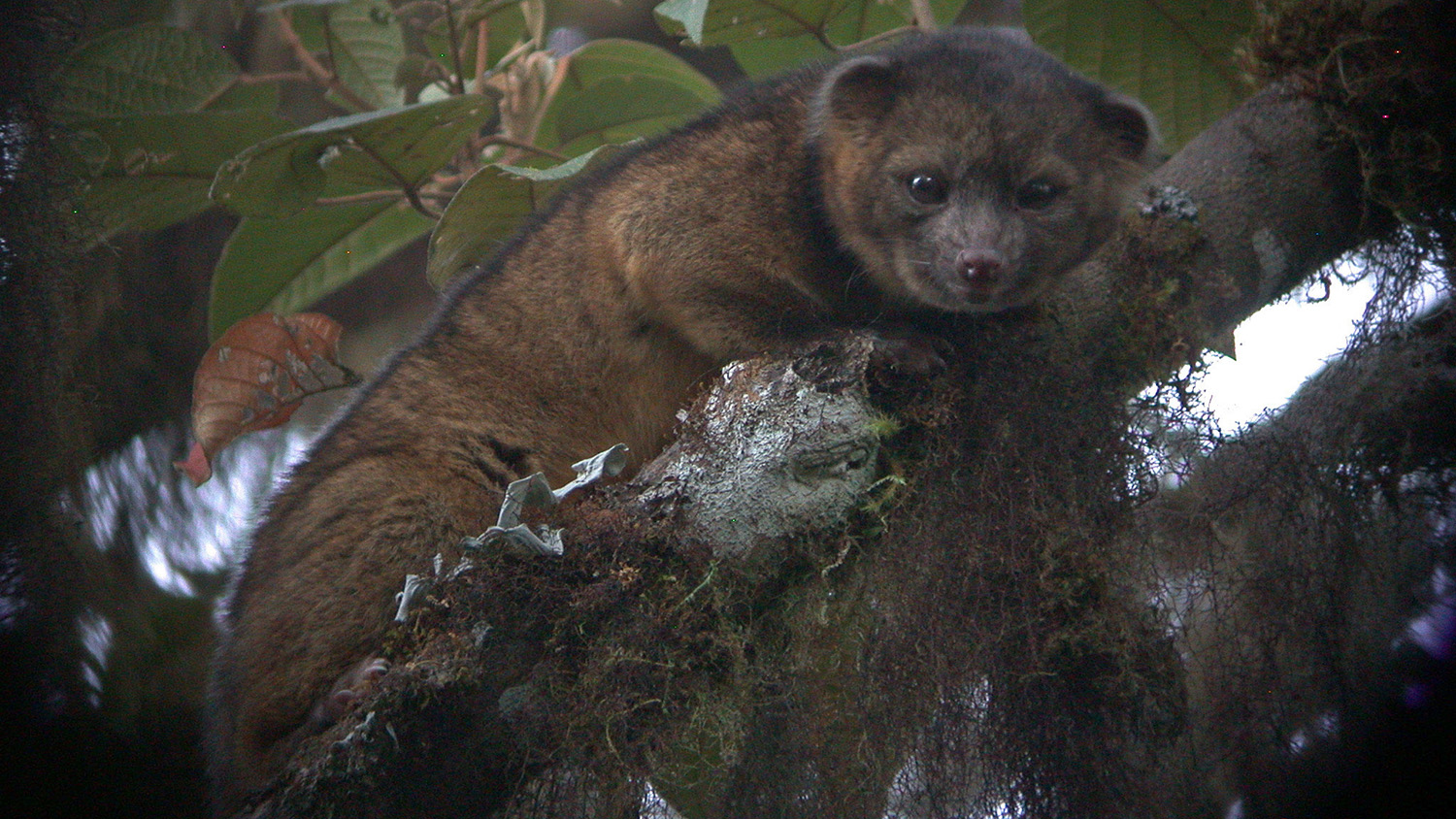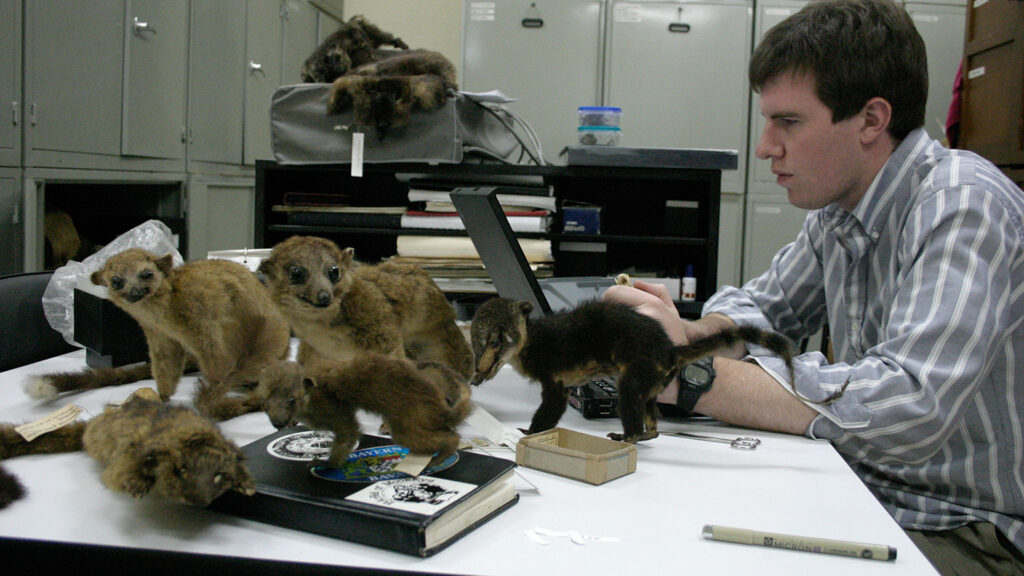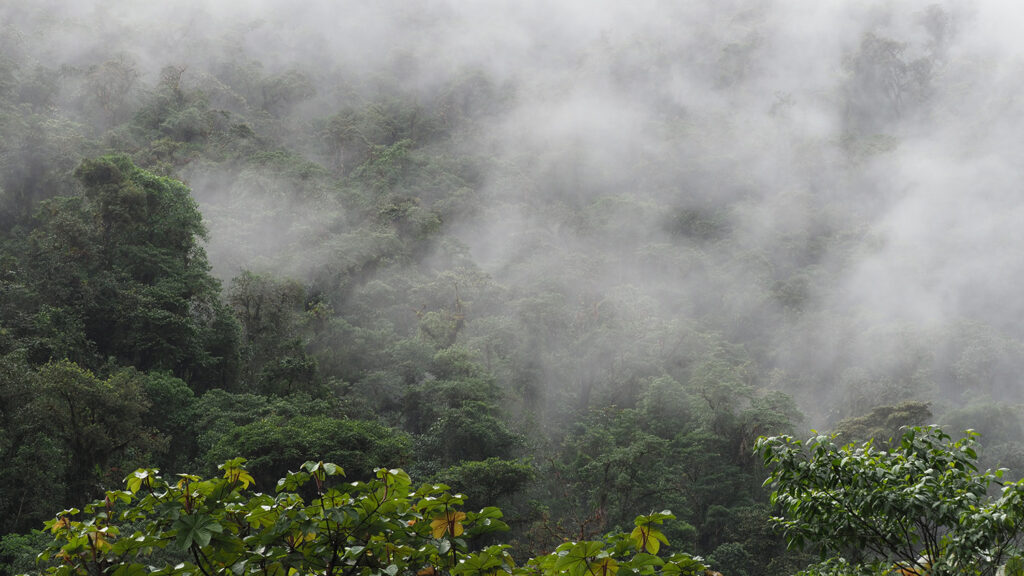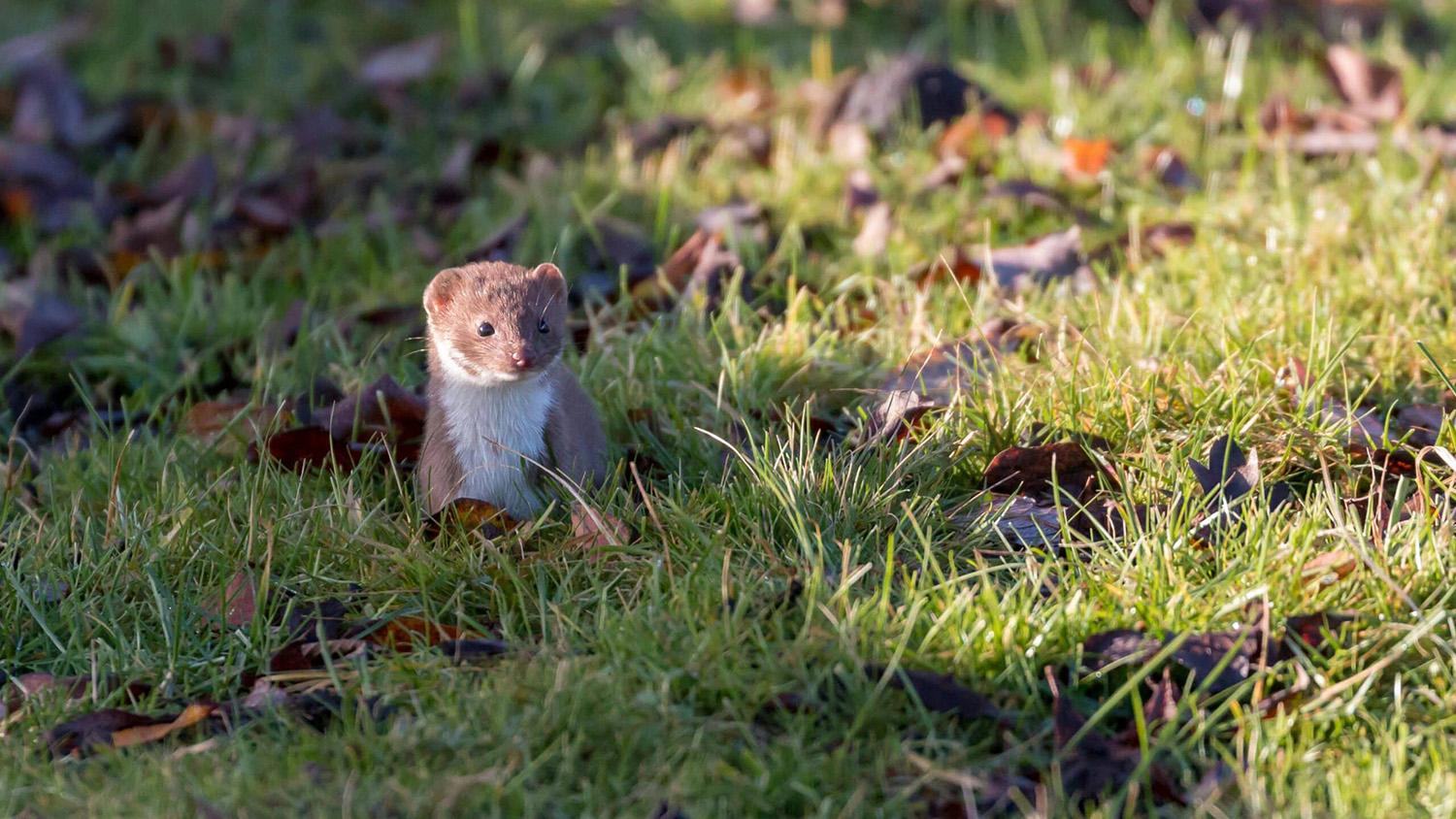A Look Back at the Discovery of the Olinguito

Ten years ago, a team of scientists — including NC State professor Roland Kays — discovered a new species: the olinguito.
The olinguito is native to the cloud forests of Colombia and Ecuador and is the smallest member of the raccoon family.
As of 2023, the olinguito remains the only carnivore species to be discovered in the Americas in over four decades.
With its large eyes, bushy tail and reddish-orange fur, the olinguito is often compared to a cross between a house cat and a teddy bear.
“Scientists describe new species every year, but most of them are bats and rats,” said Kays, a research associate professor in the Department of Forestry and Environmental Resources. “We kind of joke that ours is the cutest discovery in the past 45 years.”
The discovery of the olinguito goes back to the early 2000s when zoologist Kristofer Helgen began counting the number of olingo species.
Upon examining museum specimens around the world, Helgen found pelt and skull samples that didn’t resemble those belonging to other olingos.
Olingos are bigger than olinguitos and have long tails, short legs and pointed snouts. They also have thick coats of grayish-brown fur.

Helgen conducted genetic testing and reviewed historical field data, eventually concluding that the museum specimens belonged to an unknown species.
In the years following, Helgen decided to finally find out whether the species still existed in the wild. So he recruited the help of Kays.
Kays had previously studied the behavior and ecology of olingos in their natural habitat while completing his Ph.D. research at the Smithsonian Tropical Research Institute in Panama.
Helgen and Kays, along with Ecuadorian zoologist Miguel Pinto, set off on a three-week field expedition in 2006 to the Andes mountains.
Each day, the researchers hiked through a cloud forest during the nighttime hours in search of the unknown species.
It only took two days before the researchers found the animal climbing in the treetops of a forest on the western slopes of the Andes.
“We already knew when and where to look based on historical data, but the cloud forests have low visibility so we expected a challenge,” Kays said.
Kays and his collaborators spent the remainder of the trip studying the animal’s ecology and behaviors, and documenting the other mammals of the forest.

With their findings, the researchers mapped out the animal’s predicted geographic distribution and reorganized the olingo genus into four species, including the olinguito.
Finally, in 2013, the researchers announced their discovery of the olinguito, or the “little olingo,” in the journal ZooKeys.
Kays said the discovery of the olinguito was a career achievement, one rooted in his passion for studying tropical species.
“My undergraduate studies got me excited about doing work in the tropics, especially the unexplored tree canopy, and a lot of my graduate school work was related to that,” Kays said.
He added, “To actually discover and describe a new species from the tropical canopy was really exciting for me.”
The discovery of the olinguito also represented a pivotal moment for wildlife conservation and continues to inspire local action, according to Kays.
South America has one of the highest deforestation rates in the world, with Ecuador and Colombia losing more than 5 million acres since 2001.
In their study, Kays and his collaborators estimated that 42% of historic olinguito habitat had already been converted to agriculture or urban areas.

Many organizations throughout Ecuador and Colombia have since used the olinguito to raise awareness about local habitat loss and to generate funding for wildlife conservation.
“Our discovery of the olinguito helped to raise the profile of wildlife conservation in these countries,” Kays said.
Since the discovery, Kays said many scientists and local people have uploaded photos of the olinguito to iNaturalist.
iNaturalist allows people to upload photos of wildlife and other subjects to “discuss, identify and create research-quality citizen science data.”
In a follow-up study, Kays and his collaborators used iNaturalist photos and other citizen science contributions to revise the map displaying the geographic range of the olinguito.
While Kays doesn’t have any immediate plans to conduct further research on the olinguito, he continues to monitor iNaturalist photos to ensure the animals are identified correctly.


